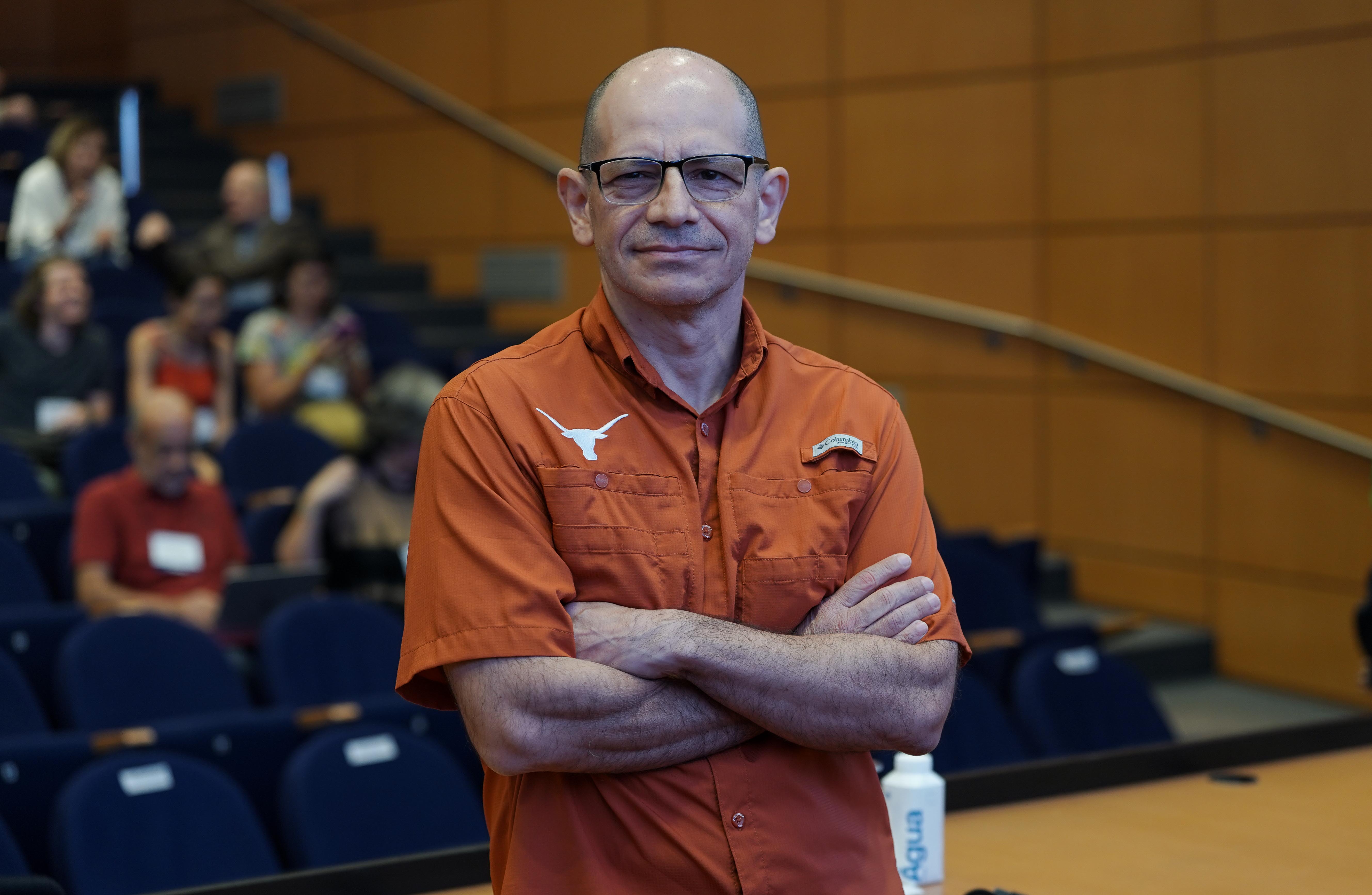

Carlos Jaramillo graduated in geology from the National University of Colombia (photo: Daniel Antônio/Agência FAPESP)
In the fourth 2024 FAPESP Lecture, Carlos Jaramillo, a Colombian geologist, palynologist and paleobiologist affiliated with the Smithsonian Tropical Research Institute (STRI) in Panama, showed how South America’s landscapes and biomes have evolved over geological time.
In the fourth 2024 FAPESP Lecture, Carlos Jaramillo, a Colombian geologist, palynologist and paleobiologist affiliated with the Smithsonian Tropical Research Institute (STRI) in Panama, showed how South America’s landscapes and biomes have evolved over geological time.

Carlos Jaramillo graduated in geology from the National University of Colombia (photo: Daniel Antônio/Agência FAPESP)
By José Tadeu Arantes | Agência FAPESP – The Neotropical rainforest is a closed-canopy biome dominated by flowering (angiosperm) plant species arranged in layers at different heights. It is worth recalling that angiosperms have seeds protected by fruits. With roots, stems, flowers, fruits and seeds, they comprise the largest and most modern group of plants, accounting for some 90% of all plant species. The transition from regions without angiosperms during the Cretaceous (between 145 million and 66 million years ago) to regions totally dominated by this type of vegetation was the most noteworthy factor in the evolution of South America’s ecosystems.
It was also the main highlight of the fourth 2024 FAPESP Lecture, entitled “The Formation of the Ecosystems of South America” and delivered by Carlos Jaramillo, a Colombian geologist, paleobiologist and palynologist who works as staff scientist for the Smithsonian Tropical Research Institute (STRI) in Panama.
After graduating in geology from the National University of Colombia in 1992, he earned a master’s degree from the University of Missouri-Rolla (UMR) in 1995 and a PhD from the University of Florida in 1999. He is the author of more than 200 articles and has won several science awards.
“The Cretaceous was characterized by open-canopy forests mainly comprising gymnosperms [non-flowering plants whose seeds are ‘naked’, i.e. not encased within ovaries or fruit] and ferns [vascular plants presenting roots, stems and leaves, which reproduce through spores], in sharp contrast to the multilevel angiosperm-rich tropical forests that emerged after the megadisturbance that marked the end of the Cretaceous [and the Mesozoic era] and the onset of the Paleogene [and the Cenozoic era],” he said.
The mega disturbance, of course, was caused by the fall of a 10 km meteorite some 65.5 million years ago in the Yucatán Peninsula. It caused a mass extinction that eliminated most living beings, including the large reptiles (dinosaurs and others) that had dominated the previous period, and reconfigured the planet’s biodiversity. “This single event changed Earth’s evolutionary trajectory,” he said.
During the Cretaceous, there was much more carbon dioxide (CO2) in the atmosphere than now, and the average global temperature was significantly higher. These conditions favored the dominance of gymnosperms and large ferns. The subsequent fall in atmospheric CO2, particularly during the Neogene, promoted the expansion of angiosperms, which dominate the tropical biomes in the present era.
Another important change that happened gradually during the Cenozoic was greater ecosystem differentiation, with a 30% reduction in tropical rainforests. “This accompanied the fall in atmospheric CO2 and the resulting cooling of the planet,” Jaramillo said. After the Eocene, several new biomes, such as tropical dry forest, savanna and montane forest, began to appear and expand, reformulating the South American landscape.
In conjunction with global climate change, a huge geological process contributed to this reconfiguring: the uplifting of the Andes, which took place during the Cenozoic, remodeling the physical landscape on a massive scale and directly influencing rainfall distribution and the emergence of new biomes. The uplift changed the patterns of atmospheric circulation and created barriers that resulted in an array of diverse microclimates. One of the resulting formations is the Páramo, a Neotropical high mountain biome in Colombia and elsewhere, with vegetation mainly comprising giant rosette plants, shrubs and tussock grasses, frequently shrouded in mist and a major source of water for the population.
Jaramillo showed that different precipitation regimes at the same temperature level can change the ecosystem from tropical rainforest to dry forest, savanna or desert. The convergence of these geological and climate events not only shaped the physical structure and floristics of South America’s biomes, but also influenced ecological processes such as seed dispersal, competition between species, and predator-prey interactions. The connection between geology and climate continues to behave as a dynamic factor in the evolution of biomes, underscoring the complexity and interlocking nature of natural systems.
The fourth 2024 FAPESP Lecture on “The Formation of the Ecosystems of South America” was introduced by Marcio de Castro Silva Filho, FAPESP’s Scientific Director, and moderated by Cristina Yumi Miyaki, a professor at the University of São Paulo’s Institute of Biosciences (IB-USP). Professor Fernando Ferreira Costa, who chairs the scientific committee that organizes the series of FAPESP Lectures, also took part in the opening session.
A video of Carlos Jaramillo’s lecture on “The Formation of the Ecosystems of South America” can be watched at: www.youtube.com/live/0QnJJldKnAo.
Republish
The Agency FAPESP licenses news via Creative Commons (CC-BY-NC-ND) so that they can be republished free of charge and in a simple way by other digital or printed vehicles. Agência FAPESP must be credited as the source of the content being republished and the name of the reporter (if any) must be attributed. Using the HMTL button below allows compliance with these rules, detailed in Digital Republishing Policy FAPESP.





